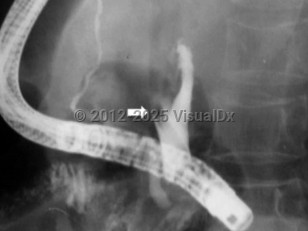Ascariasis
Synopsis

While currently uncommon in the United States, infection with A lumbricoides (ascariasis) is still prevalent in developing countries. Risk factors include warm and humid climates, poor sanitation, and poor hygiene. Ascaris lumbricoides is thought to cause a major burden of disease worldwide due to acquired nutritional deficiencies (although some studies question whether the degree of nutritional deficiency is a significant factor in the development of disease). However, it is difficult to isolate the burden of disease of A lumbricoides specifically, since many individuals are coinfected with other parasites such as hookworms and whipworms. Young children (namely, preschool and school-aged) tend to carry higher numbers of parasites compared with adults, leading to growth retardation, impaired memory, and worsened cognition.
Ascaris suum is another species of roundworm that primarily infects pigs; humans can become accidental hosts, with organisms developing to the larval tissue-migratory phase but rarely maturing fully. Thus for the purposes of this review, Ascaris will refer to A lumbricoides, which represents the majority of human illness, rather than A suum.
Codes
B77.9 – Ascariasis, unspecified
SNOMEDCT:
2435008 – Ascariasis
Look For
Subscription Required
Diagnostic Pearls
Subscription Required
Differential Diagnosis & Pitfalls

Subscription Required
Best Tests
Subscription Required
Management Pearls
Subscription Required
Therapy
Subscription Required
References
Subscription Required

